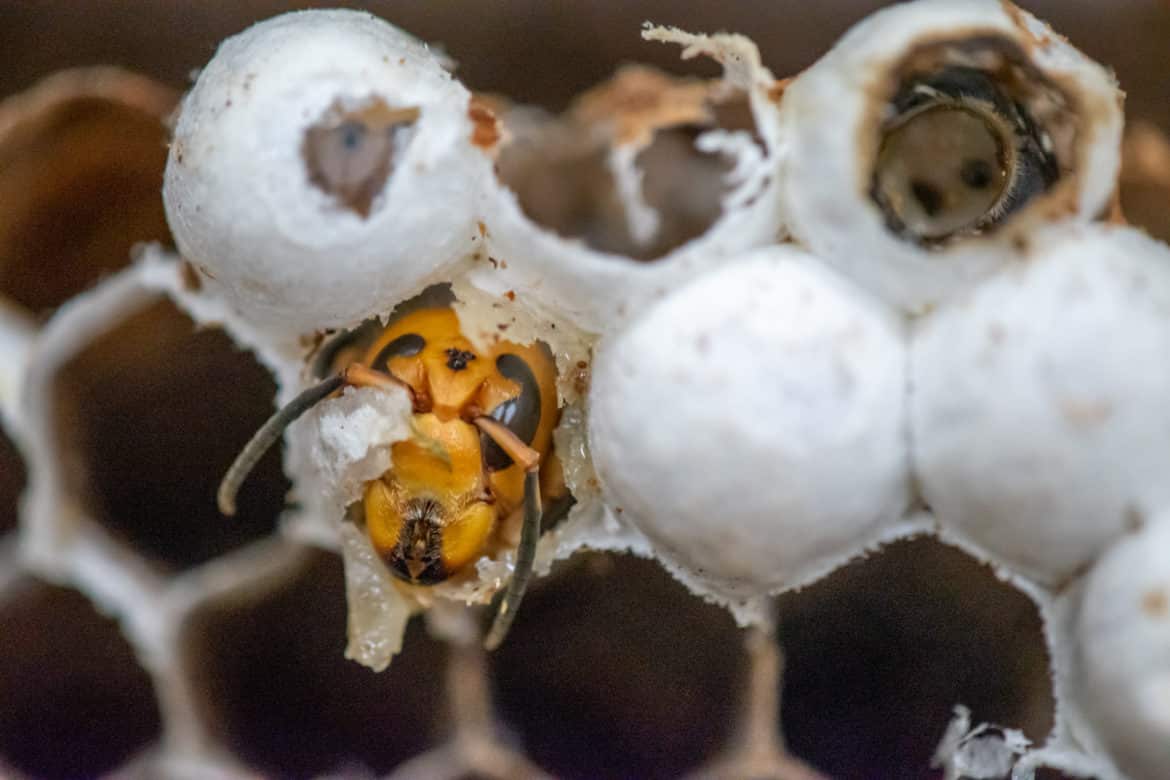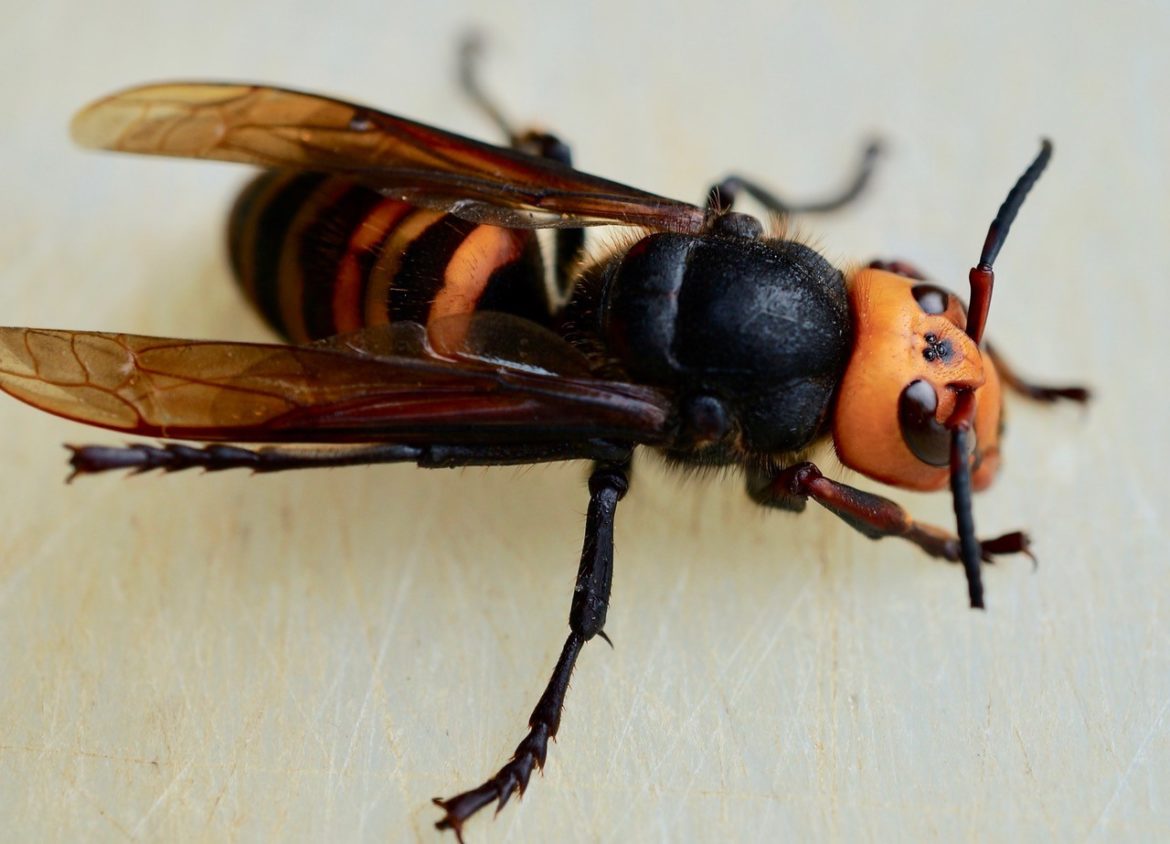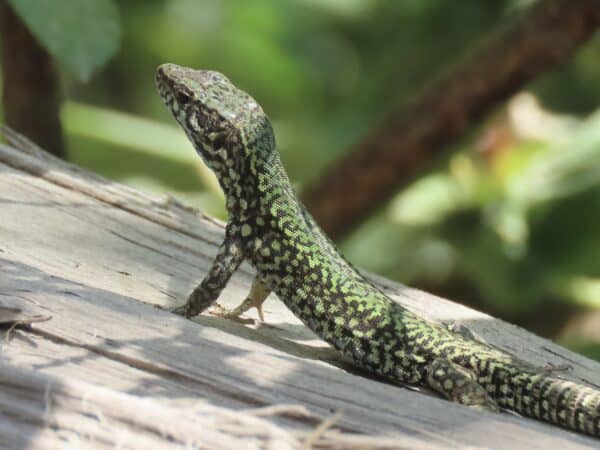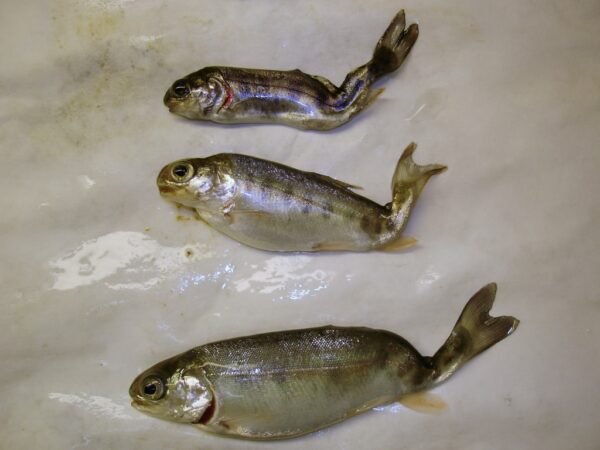By Janelle Bode | Edited by Jana Rolland | May 09, 2022
We’re not the only ones looking forward to the return of warm spring weather- Northern giant hornets (Vespa mandarinia) may soon be poking their heads out to enjoy the sunshine, too. This invasive insect is the largest species of hornet in the world and brings with it many potential negative impacts to native North American flora and fauna.
Northern giant hornets typically nest in underground cavities or tree stumps and feast on insects and honeybees. As new queens emerge from their winter hideouts to search for spring nesting opportunities, they’ll be hungry for carbs like tree sap and may even try to feed from hummingbird feeders.
Beekeepers in the commercial pollinating industry are particularly concerned about the impacts Northern giant hornets may have on BC’s native pollinators, and what effects a growing population could have on our agriculture in the future. Keeping up with the hornet’s activity through the spring and preventing its establishment in the province is critical to protecting the health and wellbeing of our native ecosystems.

Northern giant hornet History in BC
First detected in Nanaimo in 2019, Northern giant hornets are believed to have arrived on container ships. This first nest was quickly destroyed, and Vancouver Island and the surrounding Gulf Islands were declared free of this invasive insect. But the situation on the mainland turned out differently when, that same year, a single hornet was collected in White Rock, BC and then in late 2019 one was found in Blaine, Washington. Since then, both sides of the Canada-US border have been scoured, and a small number of specimens found in the area between 2019 and 2021.
Luckily for our native pollinators, DNA sequencing studies of these hornets revealed that the nests were closely genetically related. Provincial Apiculturalist for BC, Paul van Westendorp, has set and monitored hornet traps in this region for years. He calls this finding significant: “Close relatedness limits the hornet’s future viability to establish a viable pest population.”
ISCBC is planning to work with Paul to set and monitor traps again in 2022 to continue monitoring the status of the Northern giant hornet in the BC-Washington border region.

What You Can Do
We need your observations! The best way to keep tabs on these insects is through visual surveys and reports. We are asking that community scientists assist in our monitoring efforts and be on the lookout for Northern giant hornet queens. If you have a hummingbird feeder keep both an ear and an eye out this spring!
Dr Nick Wong, ISCBC’s Senior Lead, Science, describes the insect’s unique features that make it easy to recognize: “While on the lookout for Northern giant hornets, look for a large orange head with prominent black eyes and large jaws. Queens can be up to 4-5 cm in length with a black and orange striped abdomen. The thorax (where the legs and wings attach) is dark brown or black, and the wings are tinted dark brown.”


Please report any sightings through the Report Invasives App or the ISCBC website. Include a photo if possible!
Our native pollinators will thank you.
Janelle is a Research & Science Coordinator with ISCBC. She is passionate about ecological restoration and sharing information with others about invasive species. You can reach Janelle at research1@bcinvasives.ca.
Share





